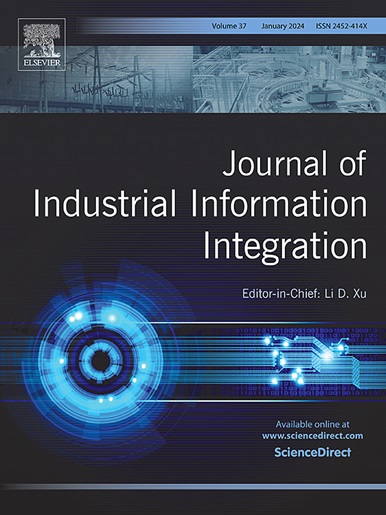Model management to support systems engineering workflows using ontology-based knowledge graphs
IF 10.4
1区 计算机科学
Q1 COMPUTER SCIENCE, INTERDISCIPLINARY APPLICATIONS
引用次数: 0
Abstract
System engineering has been shifting from document-centric to model-based approaches, where assets are becoming more and more digital. Although digitisation conveys several benefits, it also brings several concerns (e.g., storage and access) and opportunities. In the context of Cyber-Physical Systems (CPS), we have experts from various domains executing complex workflows and manipulating models in a plethora of different formalisms, each with their own methods, techniques and tools. Storing knowledge on these workflows can reduce considerable effort during system development not only to allow their repeatability and replicability but also to access and reason on data generated by their execution. In this work, we propose a framework to manage modelling artefacts generated from workflow executions. The basic workflow concepts, related formalisms and artefacts are formally defined in an ontology specified in OML (Ontology Modelling Language). This ontology enables the construction of a knowledge graph that contains system engineering data to which we can apply reasoning. We also developed several tools to support system engineering during the design of workflows, their enactment, and artefact storage, considering versioning, querying and reasoning on the stored data. These tools also hide the complexity of manipulating the knowledge graph directly. Finally, we have applied our proposed framework in a real-world system development scenario of a drivetrain smart sensor system. Results show that our proposal not only helped the system engineer with fundamental difficulties like storage and versioning but also reduced the time needed to access relevant information and new knowledge that can be inferred from the knowledge graph.
利用基于本体的知识图谱进行模型管理,支持系统工程工作流程
系统工程一直在从以文件为中心向以模型为基础的方法转变,资产越来越数字化。虽然数字化带来了许多好处,但也带来了一些问题(如存储和访问)和机遇。在网络物理系统(CPS)方面,我们有来自不同领域的专家在执行复杂的工作流程,并在大量不同的形式主义中操作模型,每个人都有自己的方法、技术和工具。存储这些工作流程的知识可以在系统开发过程中减少大量工作,不仅可以实现工作流程的可重复性和可复制性,还可以访问和推理工作流程执行过程中产生的数据。在这项工作中,我们提出了一个管理由工作流执行产生的建模工件的框架。工作流的基本概念、相关形式主义和人工制品在本体(Ontology Modelling Language,本体建模语言)中得到了正式定义。通过本体,我们可以构建一个知识图谱,其中包含我们可以应用推理的系统工程数据。我们还开发了几种工具,在设计工作流、制定工作流、存储工件、考虑版本、查询和推理存储数据的过程中为系统工程提供支持。这些工具还隐藏了直接操作知识图谱的复杂性。最后,我们将提出的框架应用于真实世界中的动力传动系统智能传感器系统开发场景。结果表明,我们的建议不仅帮助系统工程师解决了存储和版本管理等基本难题,还缩短了从知识图谱中获取相关信息和新知识所需的时间。
本文章由计算机程序翻译,如有差异,请以英文原文为准。
求助全文
约1分钟内获得全文
求助全文
来源期刊

Journal of Industrial Information Integration
Decision Sciences-Information Systems and Management
CiteScore
22.30
自引率
13.40%
发文量
100
期刊介绍:
The Journal of Industrial Information Integration focuses on the industry's transition towards industrial integration and informatization, covering not only hardware and software but also information integration. It serves as a platform for promoting advances in industrial information integration, addressing challenges, issues, and solutions in an interdisciplinary forum for researchers, practitioners, and policy makers.
The Journal of Industrial Information Integration welcomes papers on foundational, technical, and practical aspects of industrial information integration, emphasizing the complex and cross-disciplinary topics that arise in industrial integration. Techniques from mathematical science, computer science, computer engineering, electrical and electronic engineering, manufacturing engineering, and engineering management are crucial in this context.
 求助内容:
求助内容: 应助结果提醒方式:
应助结果提醒方式:


